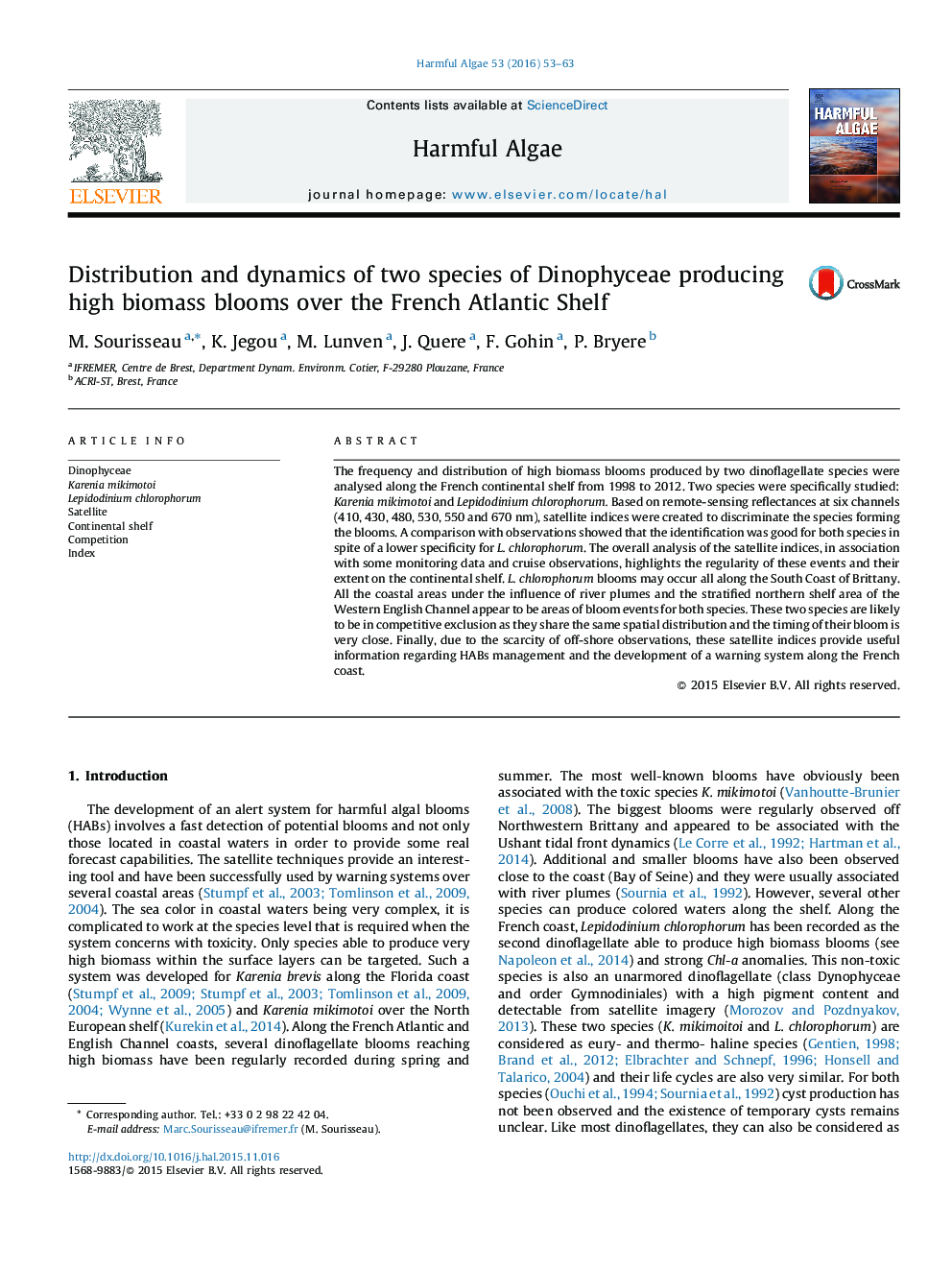| کد مقاله | کد نشریه | سال انتشار | مقاله انگلیسی | نسخه تمام متن |
|---|---|---|---|---|
| 6386086 | 1626918 | 2016 | 11 صفحه PDF | دانلود رایگان |

- An index was created to discriminate two dinoflagellate species forming high biomass blooms.
- The time series of observations and the spatial distribution of their index highlighted their competitive exclusion.
- The results highlight the relevance of developing new sampling strategies to provide observations in the thermocline.
The frequency and distribution of high biomass blooms produced by two dinoflagellate species were analysed along the French continental shelf from 1998 to 2012. Two species were specifically studied: Karenia mikimotoi and Lepidodinium chlorophorum. Based on remote-sensing reflectances at six channels (410, 430, 480, 530, 550 and 670Â nm), satellite indices were created to discriminate the species forming the blooms. A comparison with observations showed that the identification was good for both species in spite of a lower specificity for L. chlorophorum. The overall analysis of the satellite indices, in association with some monitoring data and cruise observations, highlights the regularity of these events and their extent on the continental shelf. L. chlorophorum blooms may occur all along the South Coast of Brittany. All the coastal areas under the influence of river plumes and the stratified northern shelf area of the Western English Channel appear to be areas of bloom events for both species. These two species are likely to be in competitive exclusion as they share the same spatial distribution and the timing of their bloom is very close. Finally, due to the scarcity of off-shore observations, these satellite indices provide useful information regarding HABs management and the development of a warning system along the French coast.
Journal: Harmful Algae - Volume 53, March 2016, Pages 53-63